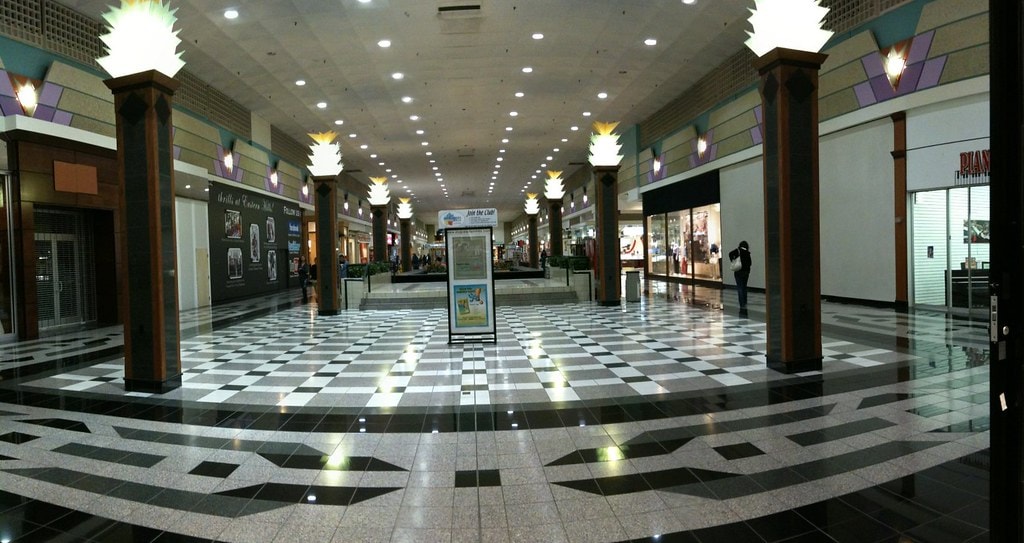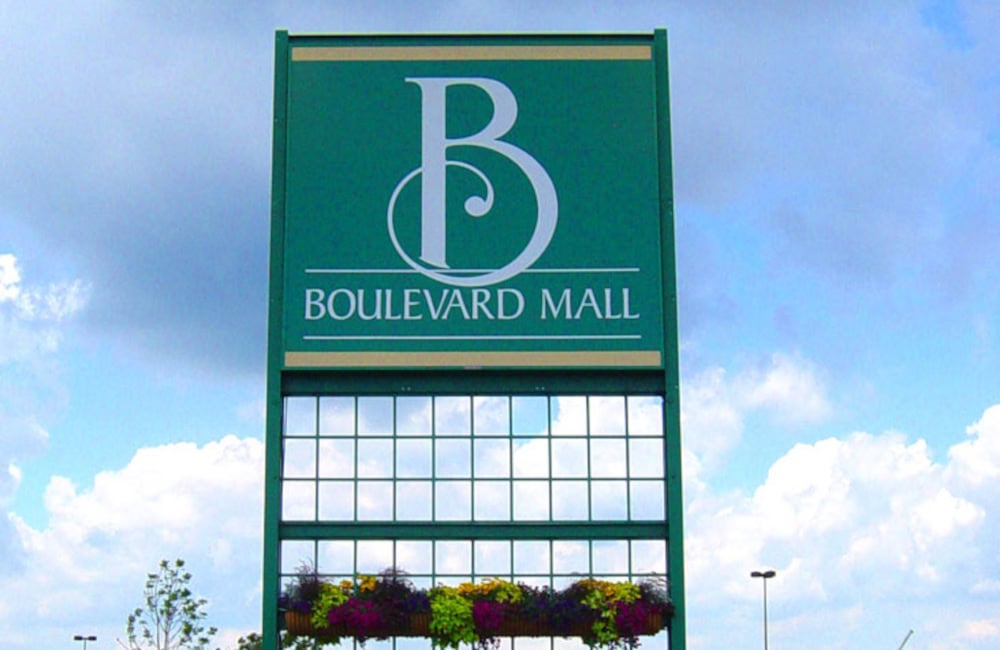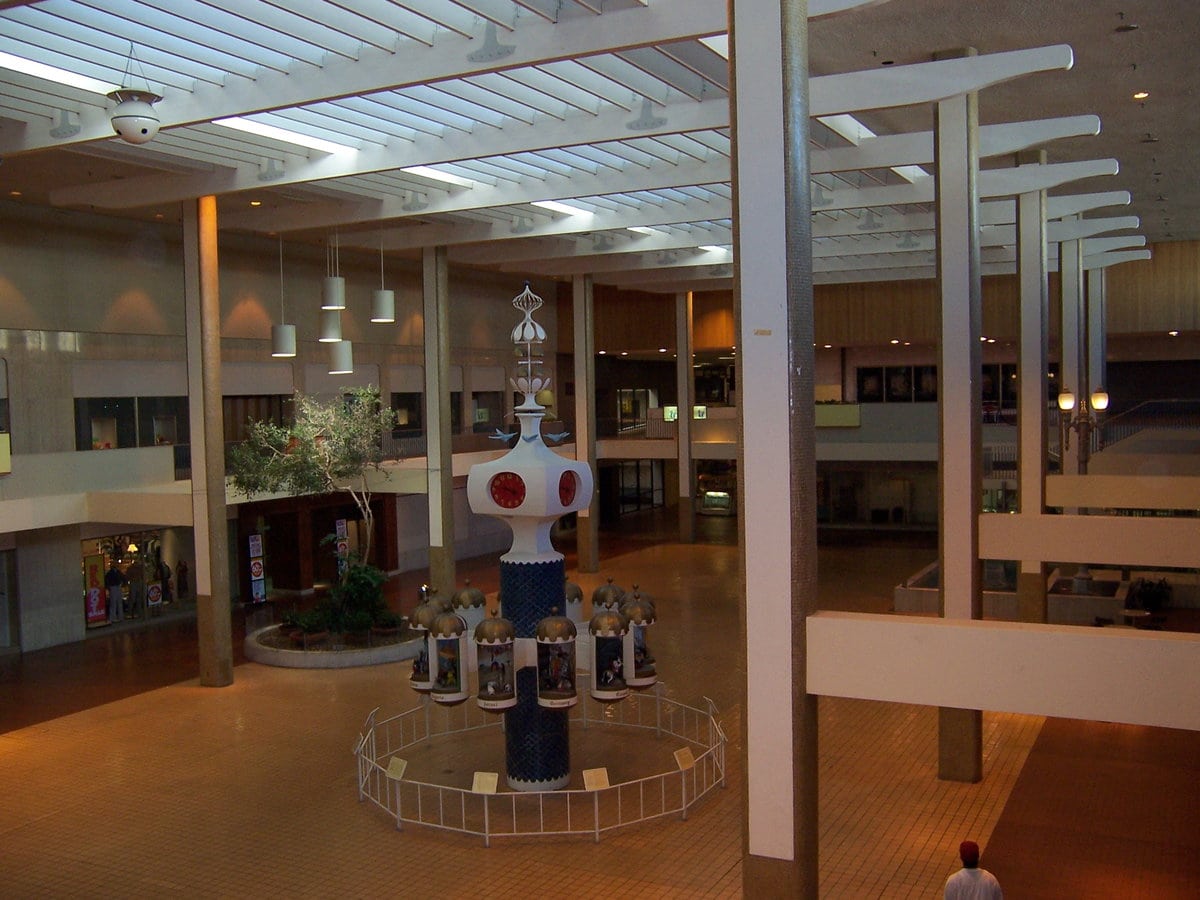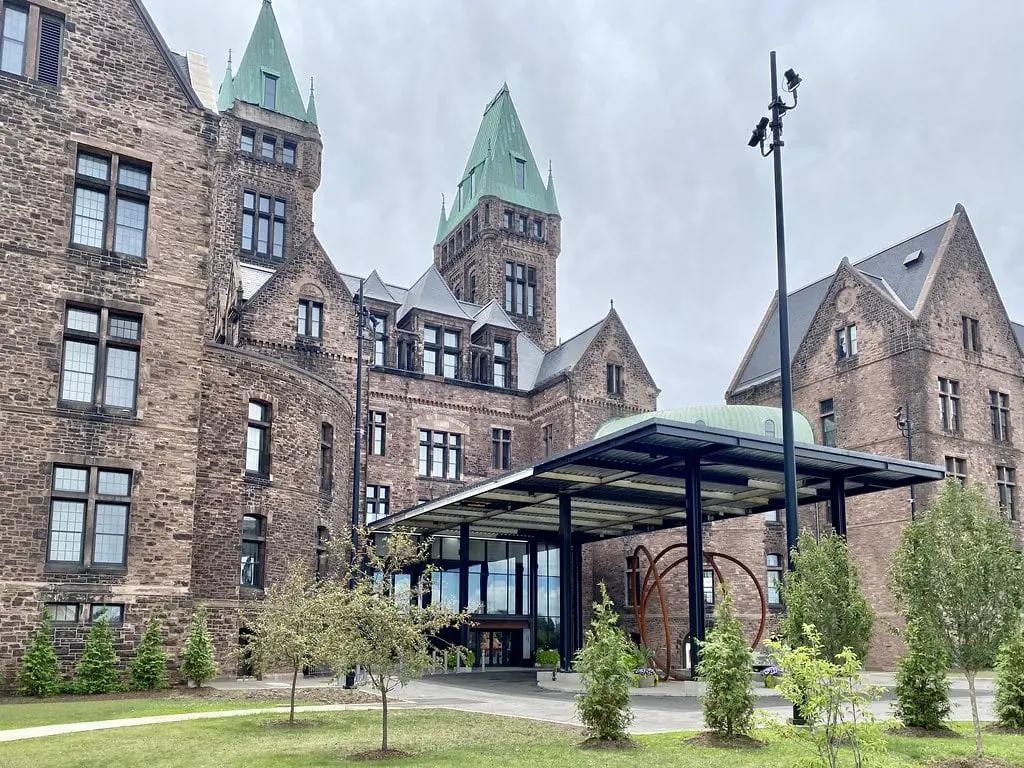Eastern Hills Mall opens on Transit Road
Eastern Hills Mall opened its doors on November 8, 1971, following a two-year construction period led by the Edward J. DeBartolo Corporation.
The site along Transit Road, near Main Street and Sheridan Drive, was cleared and developed into one of the region's most ambitious retail centers of the time.
Its opening marked the arrival of a new kind of shopping complex in suburban Buffalo.
The building's plan followed a double L-shape. Two long wings stretched out from a short center corridor that tied them together, creating a wide interior with space for department stores and dozens of smaller shops.
AM&A's, JCPenney, Sears, Jenss, Woolworth, and Hengerer's filled the main anchor boxes, giving the mall a lineup that covered fashion, home goods, and general merchandise under one roof.
Entertainment arrived soon after. General Cinema opened Eastern Hills Cinema I-II on May 24, 1972, drawing moviegoers directly into the mall.
The project had originally carried the working name Buffalo Mall, but at the request of Clarence officials, it was rebranded as Eastern Hills, tying its identity to the surrounding landscape.
Rebrands and a food court reshape the 1980s
By the start of the 1980s, the department store lineup at Eastern Hills Mall began to change.
Hengerer's, which had opened with the mall less than a decade earlier, was rebranded as Sibley's in November 1981.
The move replaced one Buffalo name with another regional chain that was expanding its reach in Western New York.
In 1987, the mall itself underwent a renovation meant to freshen the property.
A new food court was introduced and branded as Treats, providing shoppers with a centralized dining space.
The reintroduction of finishes and fixtures in the concourses gave the building an updated look.
That year, stores and shoppers were welcomed back with a grand re-opening, while the food court itself was formally dedicated in November.
Other plans surfaced around this time as well. Developers looked at bringing in Lechmere, a chain of large-format general merchandise stores, near JCPenney.
That project never came to fruition, but it reflected the ongoing search for tenants who could attract customers.
By the end of the decade, Eastern Hills had lost its title as the largest shopping center in the Buffalo market when Walden Galleria opened in 1989.

New names on the doors in the 1990s
The 1990s brought a steady cycle of anchor rebranding at Eastern Hills Mall. The Sibley's store changed again in 1990 when its parent company folded the brand into Kaufmann's.
Shoppers who had already adjusted to one name change were met with another, this time under a Pittsburgh-based banner that was becoming more common in the region.
Another long-standing local chain, AM&A's, was sold in 1994. Its store at Eastern Hills was converted into The Bon-Ton, joining a wider rollout of that brand across Buffalo.
This switch continued the trend of regional consolidation that was reshaping malls throughout Western New York.
By the middle of the decade, other stores were beginning to disappear.
Jenss, a department store that had been an original anchor, closed in 1997. The space did not remain empty for long.
Burlington Coat Factory expanded into the vacated store and opened on August 28, 1998, filling the former Jenss footprint with a discount-oriented offering.
These changes highlighted how the mall's anchor roster had become more fluid than it had been in its first 20 years, as long-established Buffalo chains gave way to national names or value-focused retailers.
Cosmetic fixes and media arrival, 2005-2012
In 2005, Eastern Hills Mall underwent a cosmetic refresh, with a focus on its east-west concourse and food court.
Tile was replaced in sections of the common area, while new fireplaces were installed to give the seating areas a more modern feel.
Flat-screen monitors were added in small clusters, offering digital signage at a time when many malls were experimenting with new ways to update their spaces.
These changes created a visual break between the updated sections and the older parts of the building, since the mall-wide tile pattern was no longer consistent after the work.
Anchor branding also shifted during this period. Kaufmann's was converted to Macy's in 2006 as part of a national rollout.
This change added the Macy's nameplate to Eastern Hills for the first time, aligning the mall with a brand that was being introduced across nearly every major market in the country.
In July 2012, Eastern Hills attracted a very different type of tenant when WBBZ-TV opened its studios inside the mall.
The station used the space for offices and production, adding a broadcast presence to a property that had long been defined by department stores and retail.

Anchor exits and replacements, 2016-2019
The wave of anchor departures at Eastern Hills Mall began in early 2016.
On January 6, Macy's confirmed it would close its location as part of a national downsizing plan. The store had occupied the former Kaufmann's space since 2006.
Soon after the closure, the large box was re-tenanted by Niagara Emporium. This multi-vendor marketplace brought dozens of small operators under one roof.
In April 2018, the Bon-Ton chain entered liquidation, which included the store at Eastern Hills. The loss of Bon-Ton left another major anchor empty.
A year later, in 2019, Raymour & Flanigan opened in that space, introducing a furniture and mattress retailer that contrasted with the traditional department store it replaced.
The arrival of Raymour & Flanigan added a home furnishings focus to a property that had been losing fashion anchors.
The changes did not stop there. In December 2018, Sears announced the closure of its Eastern Hills location.
The decision echoed a nationwide retreat by the brand, which had been an original anchor since the mall opened in 1971.
By the end of 2019, the property's anchor roster looked entirely different, with JCPenney left as the last remaining department store that had been part of the mall's original lineup.
Ownership partnership and town-center planning, 2018-2021
In March 2018, Uniland Development Company acquired a co-ownership stake in Eastern Hills Mall alongside Mountain Development Corporation.
That summer, in August 2018, the Town of Clarence approved the joint ownership arrangement, clearing the way for both companies to move forward with redevelopment ideas.
Their plan was not limited to retail but instead aimed at reshaping the entire property into a walkable district.
The following year, in January 2019, the owners hired Gensler, a global architecture and planning firm, to create a master plan for the site.
The firm had worked on similar large-scale projects in other states, and its task here was to map out how the mall could be turned into a mixed-use town center.
By March 2020, the first updates to these plans were presented, introducing early concepts for how housing, office space, and retail could be integrated on the property.
Momentum carried into June 2021, when Uniland and Mountain Development submitted a formal proposal to the Town of Clarence.
This filing marked the first time their long-term vision appeared in an official planning document.
It showed how quickly the focus at Eastern Hills had shifted from preserving the enclosed mall to preparing its replacement.

Interior winds down, exterior doors stay active, 2023-2024
Tenant changes continued as redevelopment plans advanced. In October 2023, Niagara Emporium, which had occupied the former Macy's box, closed its doors.
This departure left another large space vacant while ownership prepared for the next phase of conversion.
By January 10, 2024, notices were delivered to all interior tenants without exterior entrances.
They were instructed to vacate by January 14, 2024, signaling the end of public access to the interior concourse.
On that date, the central corridors of Eastern Hills officially closed to shoppers.
Signs were posted at the entrances, confirming that only businesses with outside access were allowed to remain open.
Several anchors and outparcel tenants continued to trade.
JCPenney, Orvis, Raymour & Flanigan, and WBBZ-TV all operated from exterior-facing stores, while restaurants and entertainment businesses with their own doors also stayed active.
The split underscored how the site was transitioning from a traditional mall into something entirely new.
Approvals set the next stage, 2025
Planning activity came to a head in mid-2025.
In June, documents prepared for the Clarence Town Board outlined a scheduled review of the State Environmental Quality Review for the Eastern Hills site.
The paperwork confirmed that the redevelopment project was moving toward a decisive step in its approval process.
On June 18, 2025, the Clarence Planning Board issued a SEQRA Negative Declaration and granted Conceptual Master Plan approval.
The plan called for up to 1,435 residential units alongside about 1.34 million square feet of commercial space, with later phases to be reviewed under Development and Architectural Plans.
This action provided a framework for replacing the enclosed mall with a town-center style district.
With these approvals in place, Eastern Hills Mall had moved from a long-discussed idea to a formally sanctioned redevelopment, positioning the property for the next stage of its transformation.





